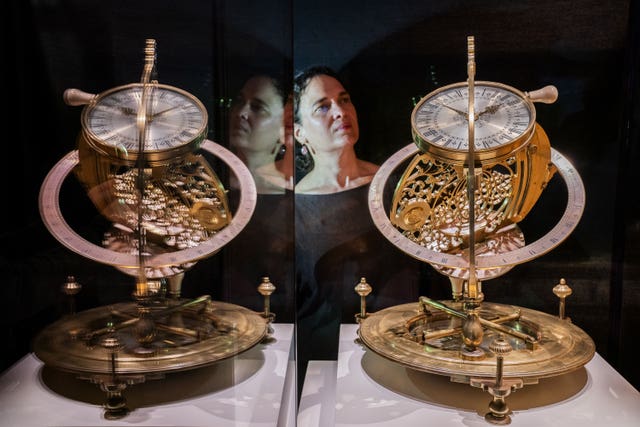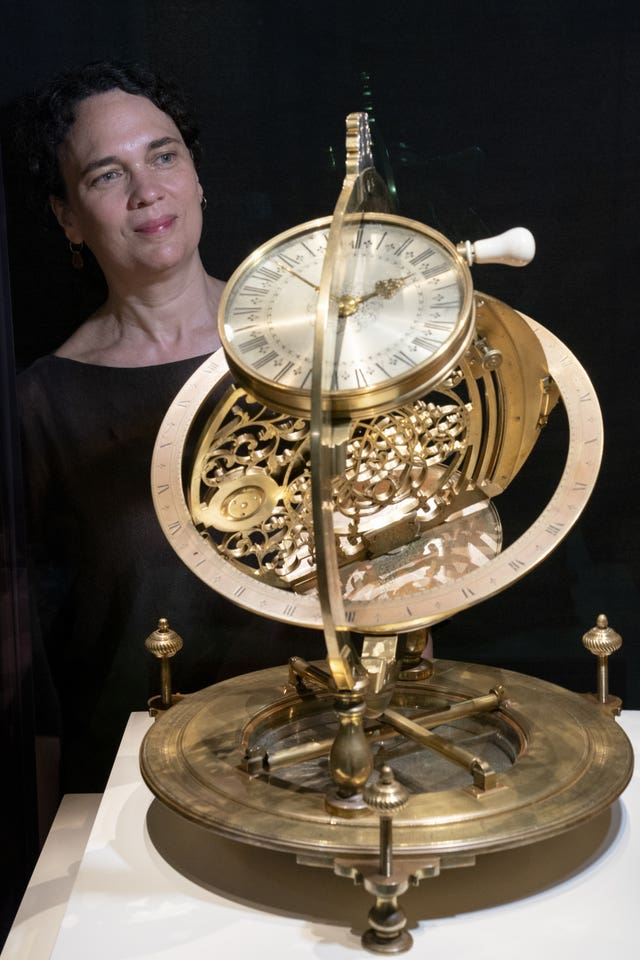An ornate 18th-century sundial made for the founder of the Royal Bank of Scotland has been acquired for the nation.
The Ilay Glynne dial, which is now on display at the National Museum of Scotland in Edinburgh, was described as a “masterpiece” of art and science.
Made around 1715, it was used to measure local time from the Sun, providing the most accurate means of setting clocks available.
It could be used at any latitude, and its form models the celestial sphere, showing the Sun’s apparent motion around the Earth and is signed by Richard Glynne (1681-1755), a maker of mathematical instruments and a member of the Clockmakers’ Company.
The dial was commissioned by Archibald Campbell, Earl of Ilay and later third Duke of Argyll (1682-1761), the most politically powerful figure in the first half of the 18th Century in Scotland.

The duke had control over royal patronage and managed Scottish affairs as well as being a founder and the first governor of the Royal Bank of Scotland, and at one time appeared on all bank notes.
Through his patronage, including at universities, he became an important sponsor and promoter of the Scottish Enlightenment.
The dial is of a type first made for figures such as Peter the Great of Russia and Prince George of Denmark, the consort of Queen Anne, suggesting the duke commissioned it as a projection of his reputation as an influential nobleman.
It is surmounted with the Ilay coat of arms, with leopard supporters, coronet and motto, in brass and silvered brass.
The central plate is decorated with the monogram “AC”, for Archibald Campbell, beneath an earl’s coronet.
The acquisition of the dial has been supported by the National Heritage Memorial Fund and Art Fund.

As founder and governor of the Royal Bank of Scotland and the British Linen Company, the duke encouraged others to invest in the African Company, East India Company and South Seas Company, which profited from colonisation, exploitation and slavery.
The dial has undergone extensive cleaning and conservation work, and is now on permanent display in the Spirit of the Age gallery in the National Museum of Scotland.
Dr Rebekah Higgitt, principal curator of science at National Museums Scotland, said: “We’re delighted to acquire the spectacular Ilay Glynne dial and hugely grateful to the funders who have made it possible.
“It reflects the breadth of our collections, being at once a significant scientific instrument, an object of great beauty and one with strong connections to key developments in Scotland’s history.”
Dr Simon Thurley, chair of the National Heritage Memorial Fund, said: “The Ilay Glynne dial is a magnificent example of scientific endeavour, and we are delighted to have supported National Museums Scotland to acquire it for a UK public collection.
“Not only is it an exquisite instrument, but its provenance offers an opportunity to explore important stories about scientific, intellectual and cultural currents that saw the birth of the Scottish Enlightenment.”
Jenny Waldman, Art Fund director, said: “This stunning sundial offers a unique insight into scientific innovations in 18th century Scotland. The precision of the craftsmanship is exquisite, a true work of art.
“I’m so pleased that Art Fund has been able to support National Museums Scotland to acquire this remarkable object for their permanent collection, ensuring it will continue to enlighten visitors from Scotland and beyond.”





Comments: Our rules
We want our comments to be a lively and valuable part of our community - a place where readers can debate and engage with the most important local issues. The ability to comment on our stories is a privilege, not a right, however, and that privilege may be withdrawn if it is abused or misused.
Please report any comments that break our rules.
Read the rules hereLast Updated:
Report this comment Cancel